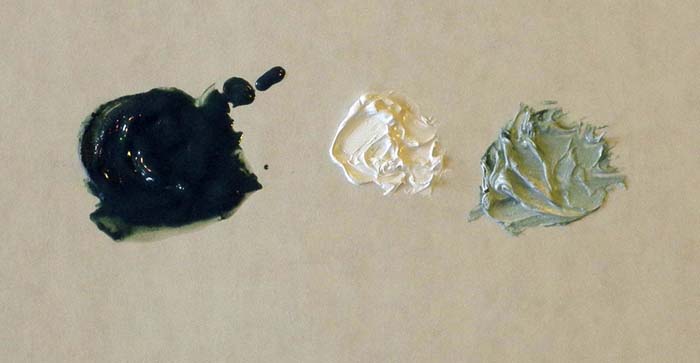Left – Pure Nicosia Green Earth mixed with Linseed
Middle – Holbein Silver White
Right – Exact beads of each color mixed together
Nicosia Green Earth has many differing properties than Bohemian. This one has far lower saturation qualities. As you can see, mixing the same size bead together resulted in a much more pastel tone. This is a great example of the meaning of color saturation. Some pigments are so high in power that they actually overpower any other color mixed with it. I find this very annoying and hard to work with.
An example of this is the modern pigment, chromium oxide green. Though it is attractive, it is high power therefore, hard to manage. Not only do we as artists have to understand properties such as permanency/lightfastness, but also how each pigment will respond to our needs. Nicosia pigment is also slightly gritty, so be aware of what you want the surface of your painting to look like. Natural Pigments’ Nicosia Green does not contain synthetic colors.


Your blog is so full of information. I have been re-exploring an earlier abstract series of mine lately and purchased some marble dust from Natural Pigments. I’ve found it to be quite interesting to use in my ancient walls work and will take more baby steps into using the dry pigments. I had forgotten about Kremer. I was introduced to their pigments years ago in a egg tempera painting class where we mixed our own using egg yolks and painted on the traditional gessoed panels. I just wish there was more time to explore everything!
Yes, Sue, I know what you mean! So many paintings, so little time.